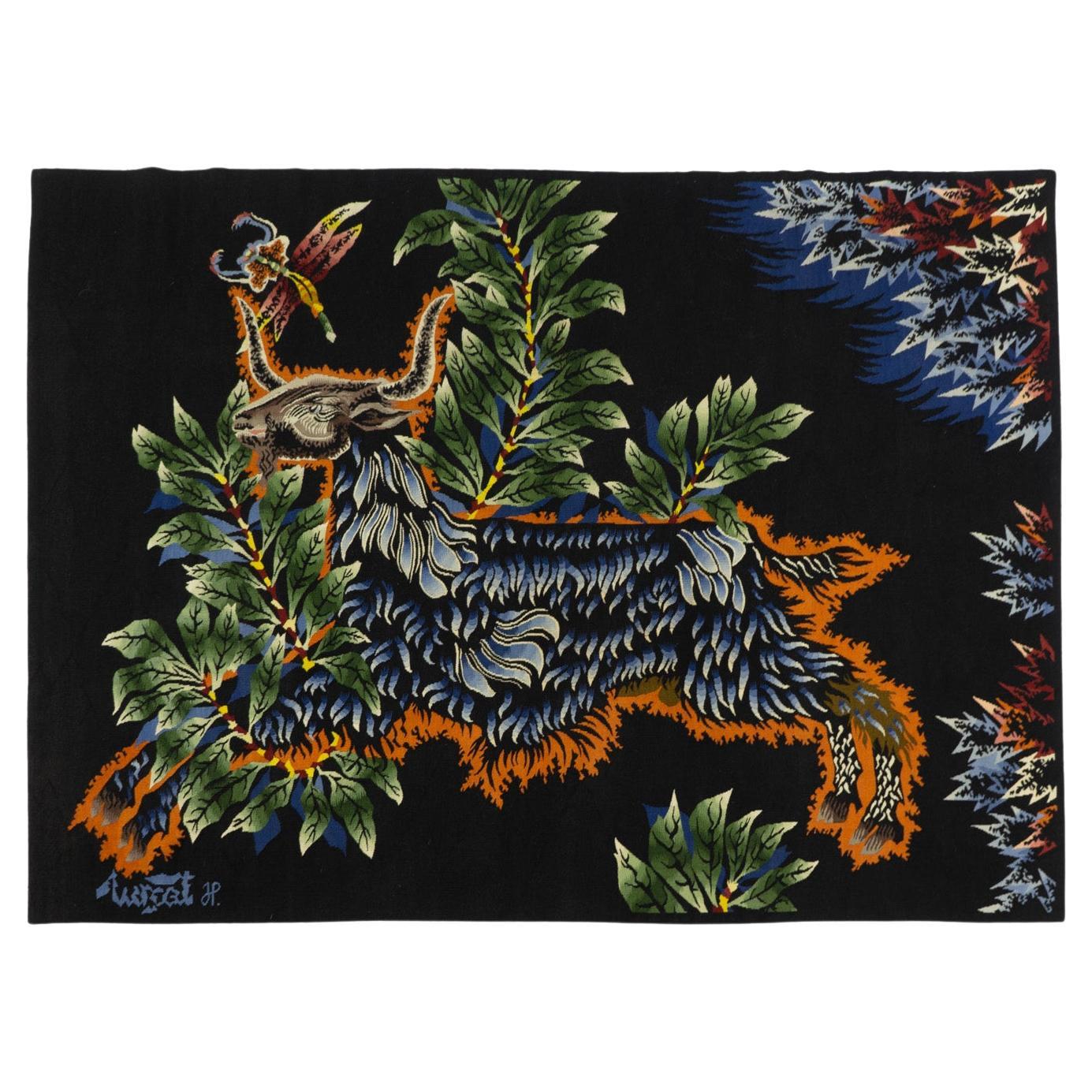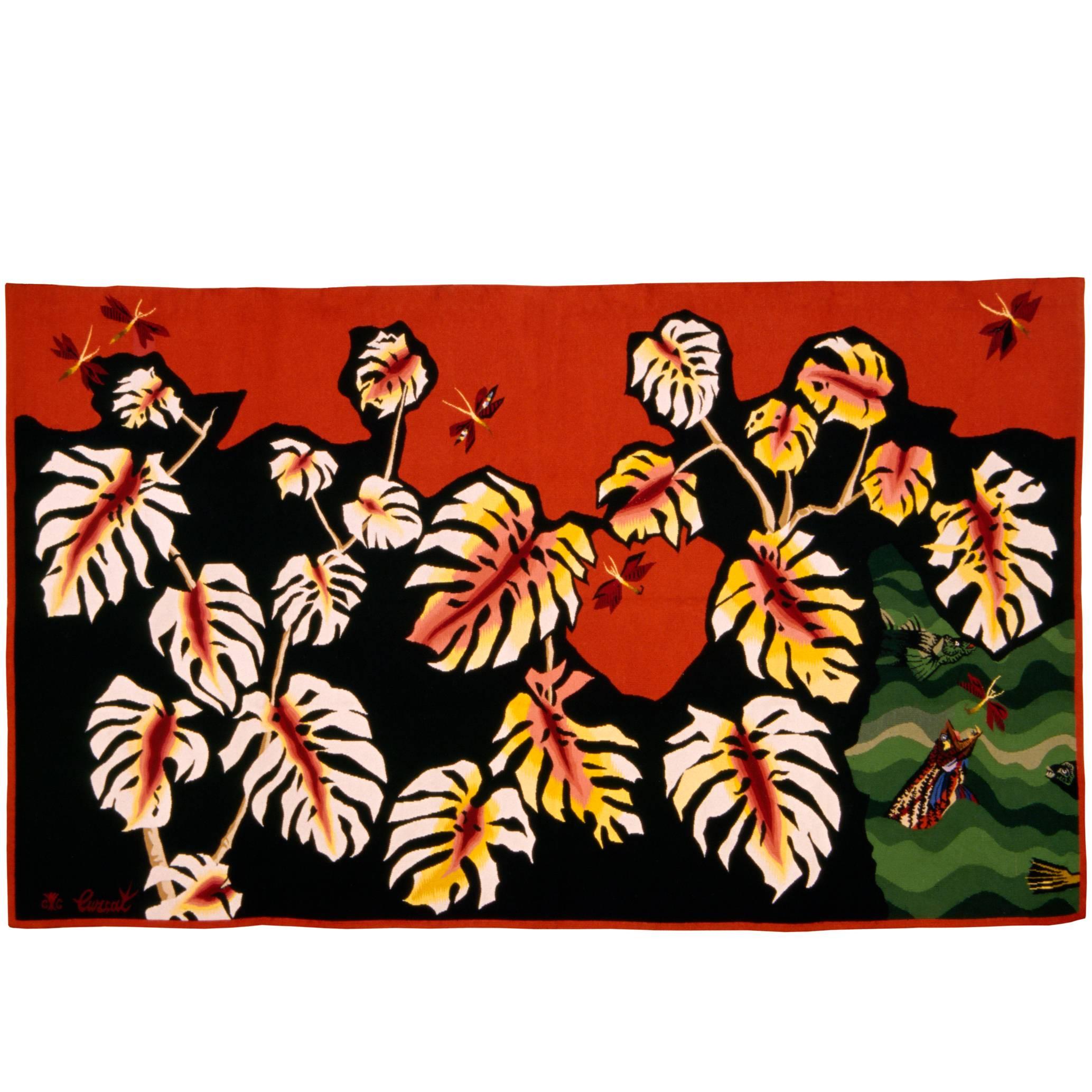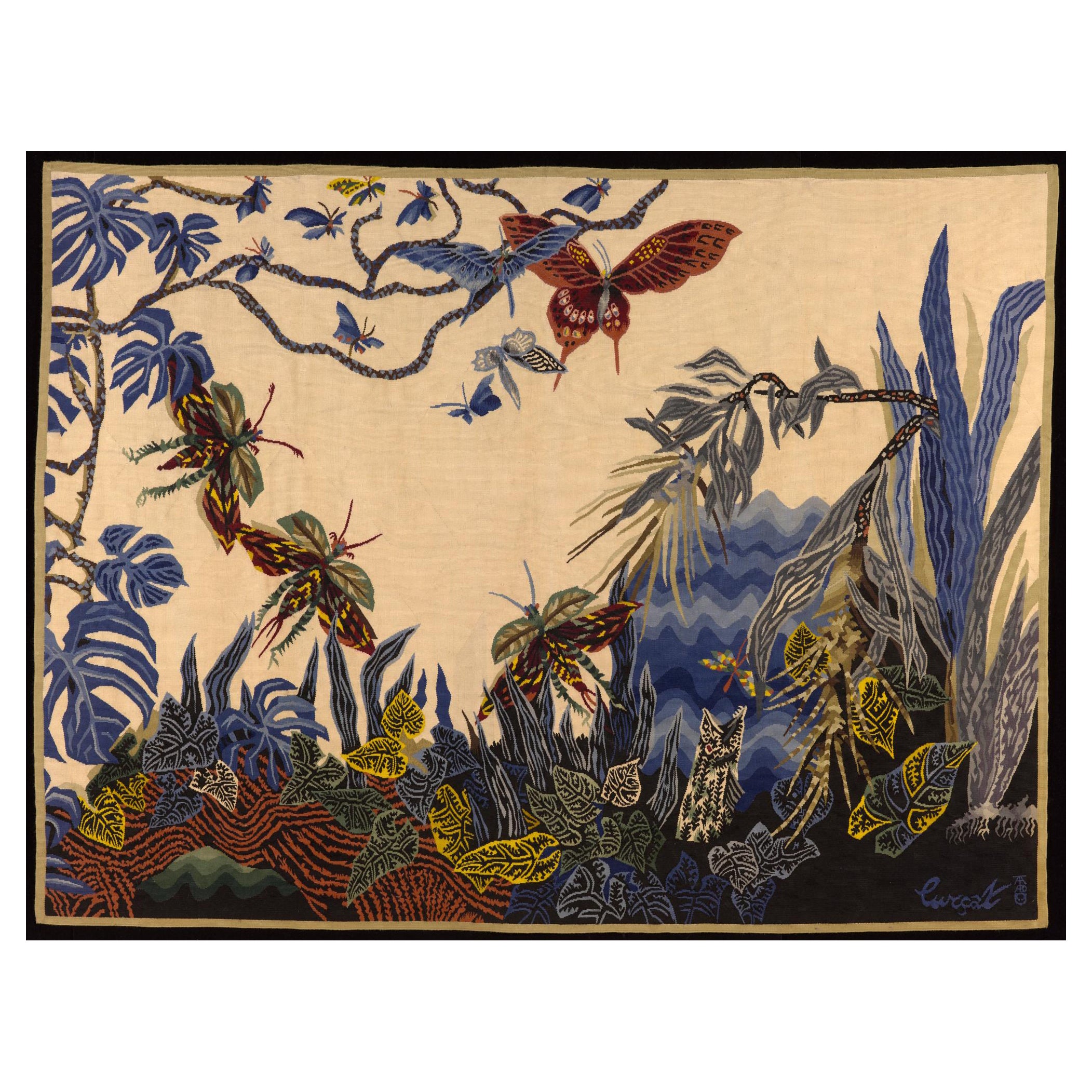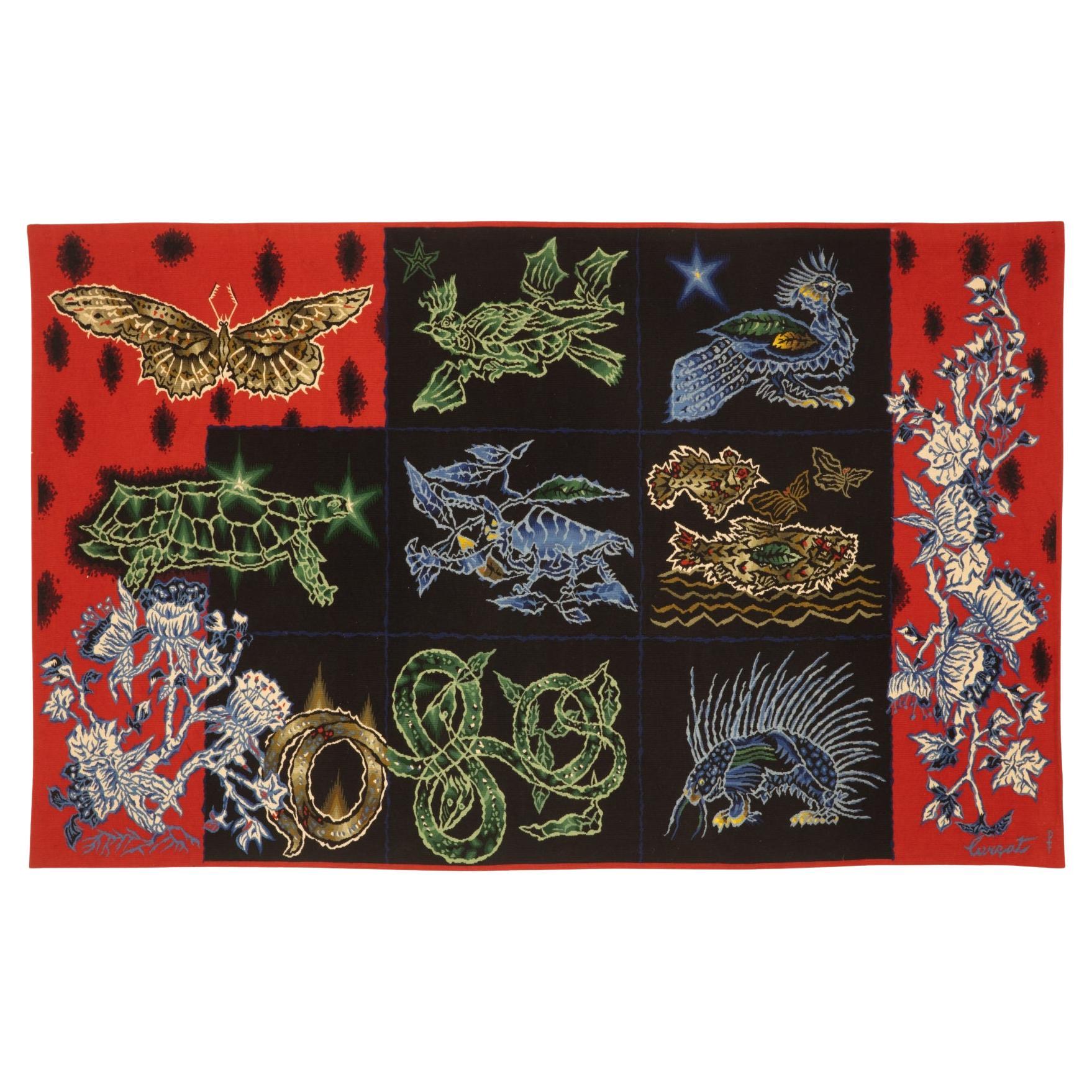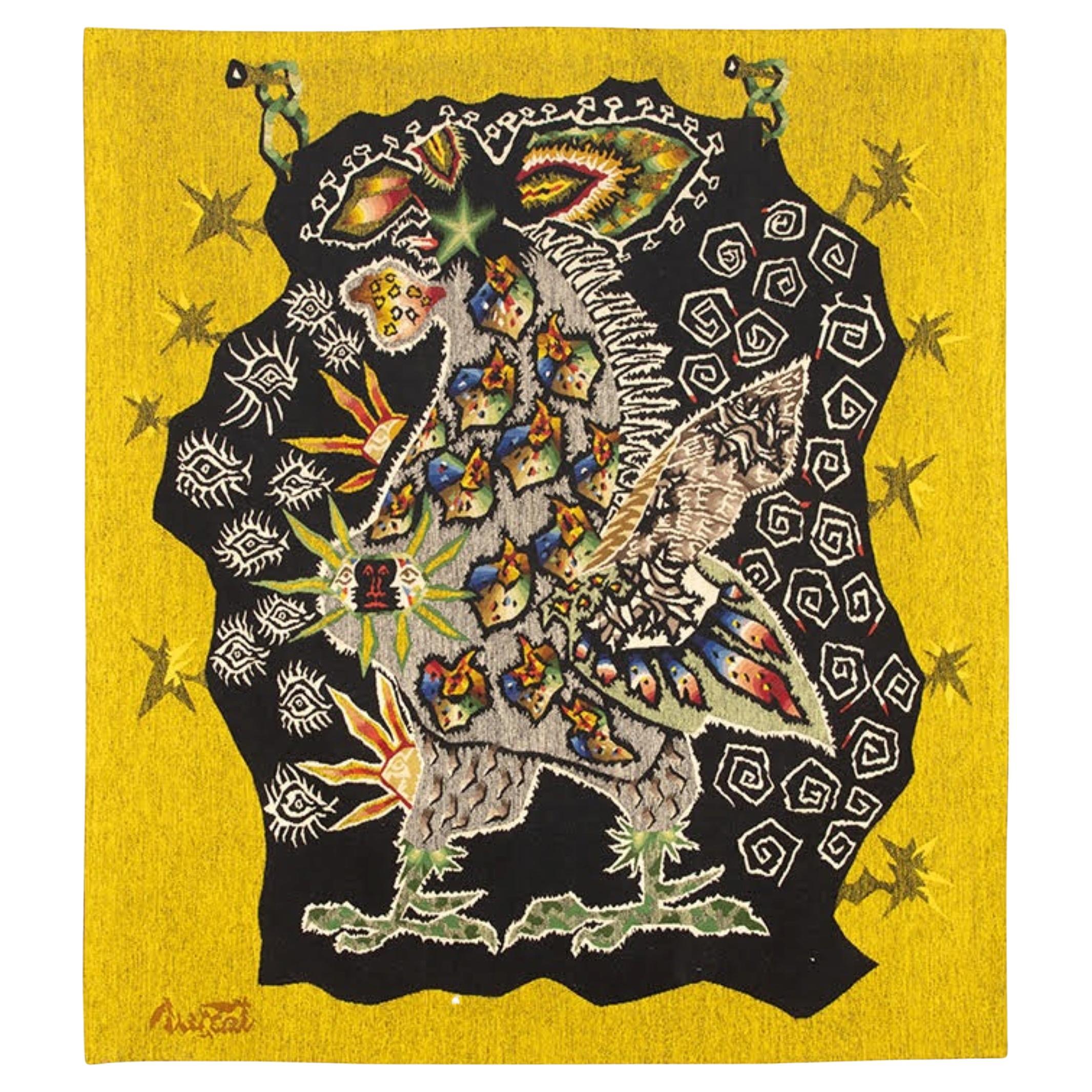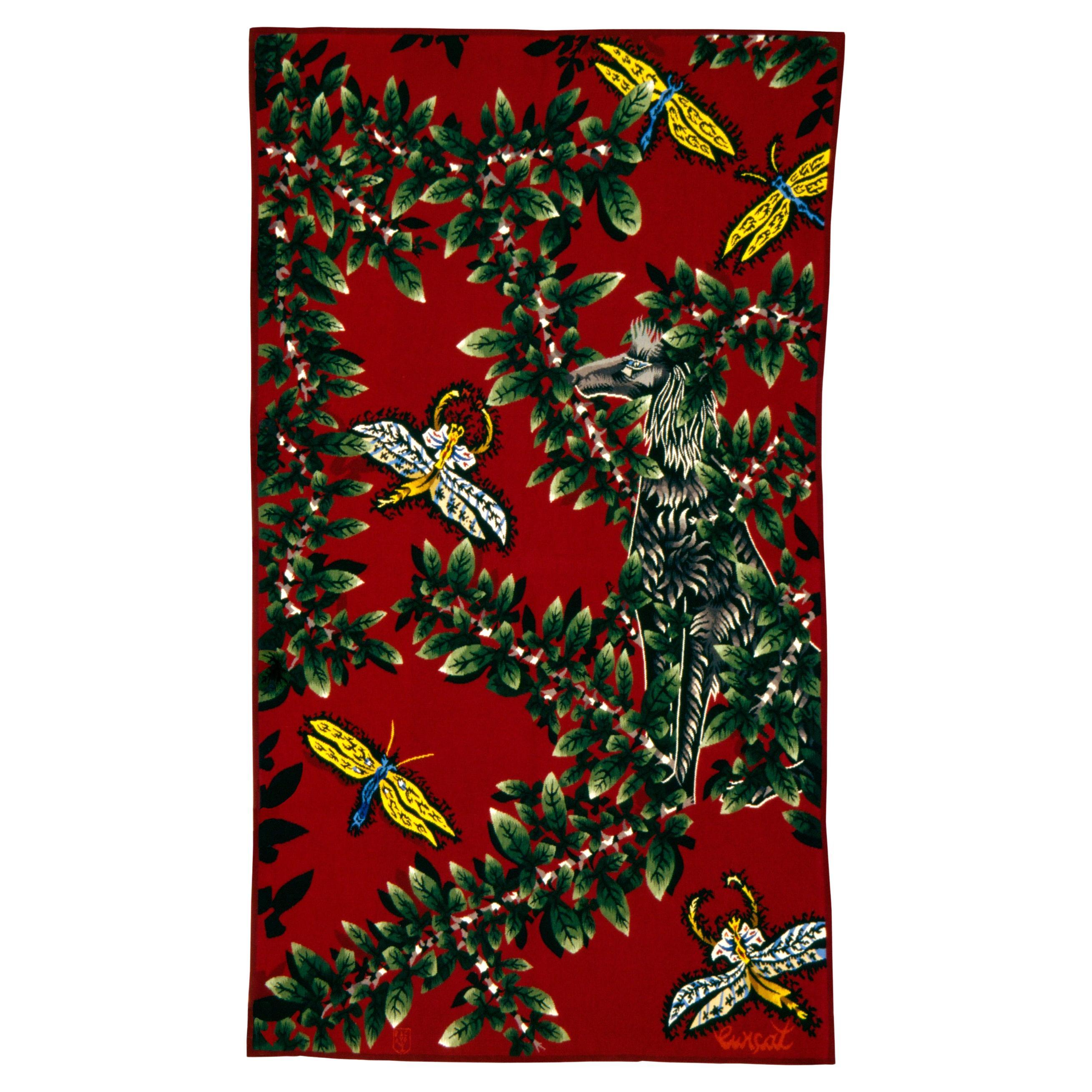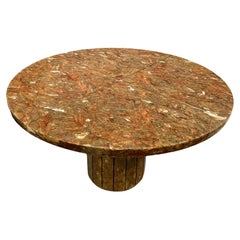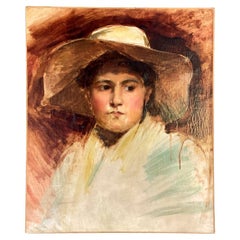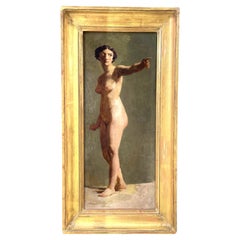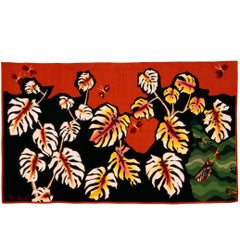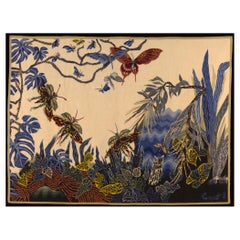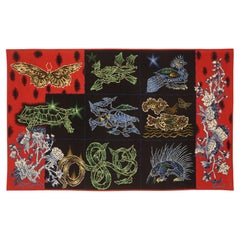Jean Lurcat ( 1892-1966 )
“LE BOUC BLEU”
Aubusson tapestry
Mid-century polychrome hand wool woven tapestry represents a Goat in foliage surmounted by a flying insect.
Jean Lurçat is a French painter, ceramist and tapestry designer, born in Bruyères (Vosges)1 on July 1, 1892 and died in Saint-Paul-de-Vence on January 6, 1966.
He owes his notoriety mainly to his tapestry work, the language of which he profoundly renovated in the 20th century.
He is the older brother of the architect André Lurçat2.
In 1917, Jean Lurçat had his mother execute his first canvases: Green Girls and Evenings in Granada. At the end of the war, in 1918, he returned to Italy where he spent a holiday in Ticino in 1919 with Rilke, Ferruccio Busoni, Hermann Hesse and Jeanne Bucher. His second exhibition was held in Zurich that year.
In 1920, he traveled a lot: Berlin, Munich, Rome, Naples... then moved to Paris with Marthe Hennebert (who had been, from 1911, the muse of Rainer Maria Rilke). It is she who weaves two tapestries to the small point: Fisherman and Pool. That year, he exhibited two tapestries and four canvases at the Salon des indépendants. He met the art dealer Étienne Bignou.
In 1921, he met Louis Marcoussis, he discovered Pablo Picasso and Max Jacob, created decorations and costumes, for the Pitoëff company's show: The one who received slaps, and spent the autumn on the edge of the Baltic. The following year, he created his fifth tapestry on the canvas, Le Cirque, for Mrs. Cuttoli. His first solo exhibition is held in Paris, in April and September (oils, gouaches, watercolors, drawings). He made a large wall decoration - now disappeared - at the Château de Villeflix, owned by Berheim. Then he travels to Berlin where he finds Busoni.
For two years, Lurçat resumed the road of travel. In 1923, he went to Spain (Barcelona, Cadiz, Seville and Toledo); in 1924, he discovered North Africa, the Sahara, Greece and Asia Minor. On his return, he signed a non-exclusivity contract with his merchant friend Étienne Bignou. His brother André is building his new house, the Seurat villa, in Paris. He devoted part of the year 1924 to the creation of a sixth canvas, Les Arabes (12 m2). On December 15, he married Marthe Hennebert and traveled in 1925 to Scotland, then to Spain and North Africa.
On his return, he moved to the Seurat villa. He participates in several exhibitions with Raoul Dufy, Louis Marcoussis, Jean-Francis Laglenne... He exhibits at Jeanne Bucher; participates in the set (carpets and paintings) of Marcel L'Herbier's film, Le Vertige; writes, illustrates, and publishes Toupies et Baroques. In 1926, he exhibited personally in Paris and Brussels, and participated in group exhibitions in Vienna, Paris and Antwerp. His fame began to reach him: many articles are devoted to him. His works represent oriental portraits and landscapes.
With Marthe, he left in 1927 for the East, spent the summer in Greece and Turkey. He decorated the living room of the David David-Weill family with four tapestries at the small point (28 m2), and produced L'Orage for Georges Salles (Paris, National Museum of Modern Art). He returned to Greece and Italy (Rome) in 1928. Before embarking in October for the United States, on the occasion of his first exhibition in New York. The following year, 1929, he stayed in Morocco.
In 1930, he exhibited in Paris, London, New York, Chicago, illustrated with nine dry points Les Limbes by Charles-Albert Cingria, a work edited by Jeanne Bucher. Then he will stay in the United States. He divorced Marthe Hennebert whom he nevertheless asked to weave L'Été (20 m2). The following year, in May 1931, he married Rossane Timotheef and moved to Vevey (Switzerland). If he wrote many articles on his painting, he reduced his pictorial production. La Neige (18 m2), is woven to the small point by Marthe Hennebert.
In 1932, Jeanne Bucher published eight pen drawings, P.P.C. (to take leave). In December, he participated with Matisse, Picasso, Georges Braque, André Derain and Raoul Dufy in the exhibition Sélections: event organized in New York by the Valentine Gallery. Having subscribed to a political commitment anchored in the communist left, he will therefore mix his artistic production with his political opinions. In 1933, he stayed in New York. He created the decor and costumes for the Jardin Public, George Balanchine's ballet on music by Vladimir Dukelsky; composed Orage, a cardboard made at the request of Marie Cuttoli. 1933 was also and above all the year in which his first tapestry woven in Aubusson following the new and revolutionary technique he developed.
In 1934, he returned to New York where he participated in a new creation of scenery and costumes for a choreography of Balanchine. He exhibits in Chicago and Philadelphia (oils and gouaches). Then he returns to Paris and Vevey for the summer. At the end of the summer, he left for Moscow where he exhibited at the Western Museum (the current Pushkin Museum of Fine Arts) and then at the Kiev Museum, (gouaches and oils). In 1935, he painted the Dynamiteros in Spain in connection with the revolution and the Spanish war.
In Paris, he participated in the activities of the Association of Revolutionary Writers and Artists. Then he followed, with André Malraux and Louis Aragon, the days of friendship for the Union of Soviet Socialist Republics. In 1936, he exhibited in London and released his first tapestry executed at the Gobelins manufacture, Les Illusions d'Icare (3.30 × 3.50 m, Royal Holland collection). The year 1937 will be the year of his meeting with François Tabard and the creation of large tapestries: Le Bosquet (2.00 × 2.50 m) and Les Oiseaux, woven at the Aubusson workshop-school, and Forêts, second tapestry woven at the Gobelins (2.60 × 4.00 m).
In July 1937, in Angers, the vision of the hanging of the Apocalypse (14th century) caused an aesthetic and artistic shock announcing the work to come. In 1938, Moisson (2.75 × 5.50 m) was woven at Tabard. The Beauvais manufacture weaves tapestries for four armchairs, a couch and a screen intended to accompany Icarus' hanging. In 1939, he exhibited in New York and Paris (Petit Palais). In September, he moved to Aubusson with Marcel Gromaire and Pierre Dubreuil in order to bring back to life the tapestry which, at the time, was undergoing a serious crisis. He develops a new technical language: numbered cardboard, reduced pallet, robust wide-point weaving. From now on, he abandoned oil painting in favor of gouache. The National Museum of Modern Art acquires Jardin des Coqs and L'Homme aux Coqs, whose cardboard will be destroyed by the SS in 1944 in Lanzac. In 1940, he collaborated with André Derain and Raoul Dufy. Aubusson's workshops weave about twenty of his works.
In 1941, he participated with Boris Taslitzky in the creation of a Dufy cartoon, Le Bel Été, and settled in the Lot with Rossane Timotheef. In the United States, Victor, his adopted son, is involved in the clandestine networks operating in France. Lurçat stayed at the Benedictine abbey of En-Calcat and introduced Dom Robert to tapestry. In 1942, he moved to Lanzac. The tapestries Libertés on the poem of Paul Éluard (preserved at the Museum of Modern Art in Paris) and Es La Verdad on a poem by Guillaume Apollinaire (private collection), are woven in Aubusson. In 1943, an exhibition of contemporary tapestries was held at the Musée des Augustins in Toulouse (Lurçat, Gromaire, Dufy, Marc Saint-Saëns, Dom Robert). In 1944, his tapestries were exhibited in Paris and his paintings in New York.
